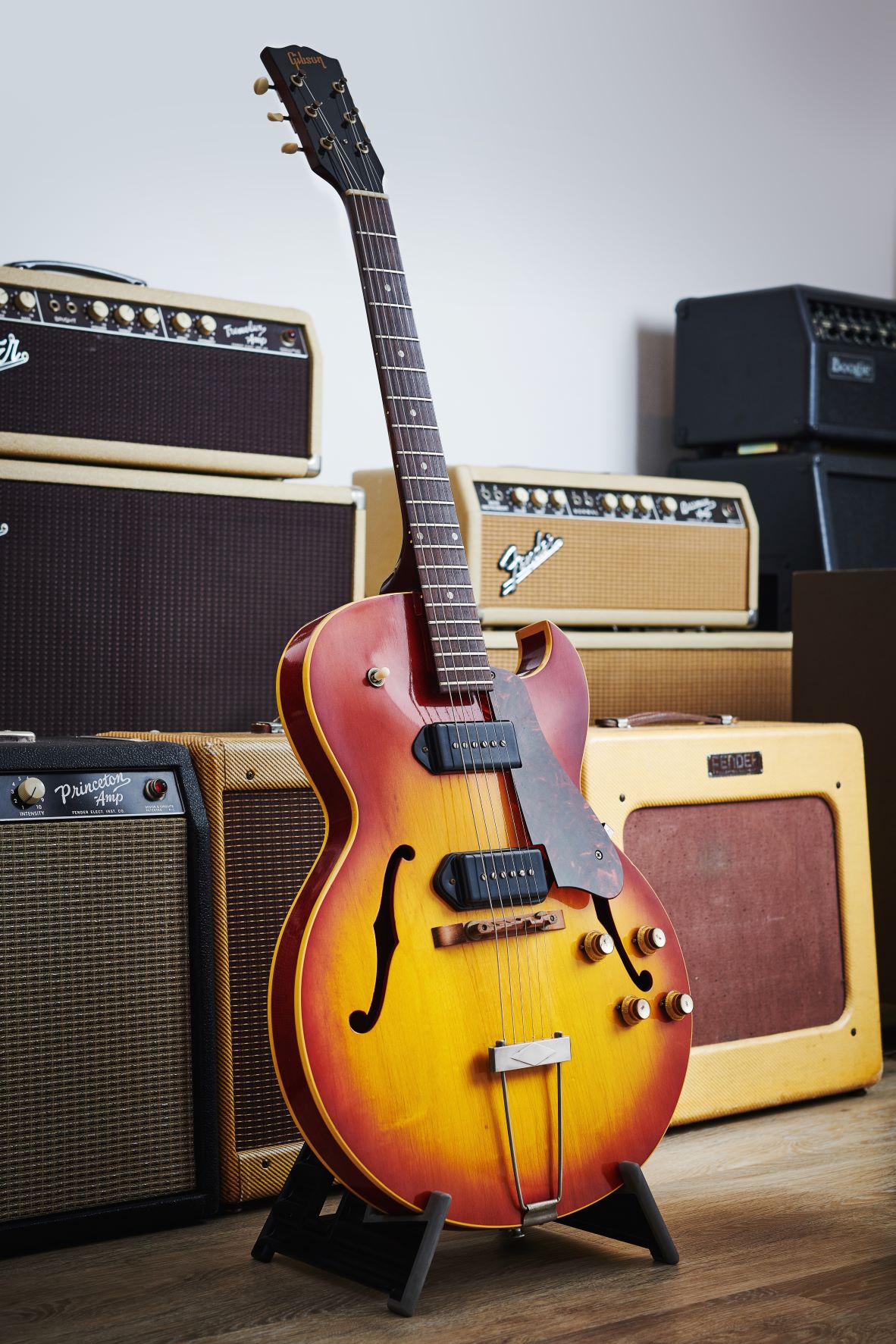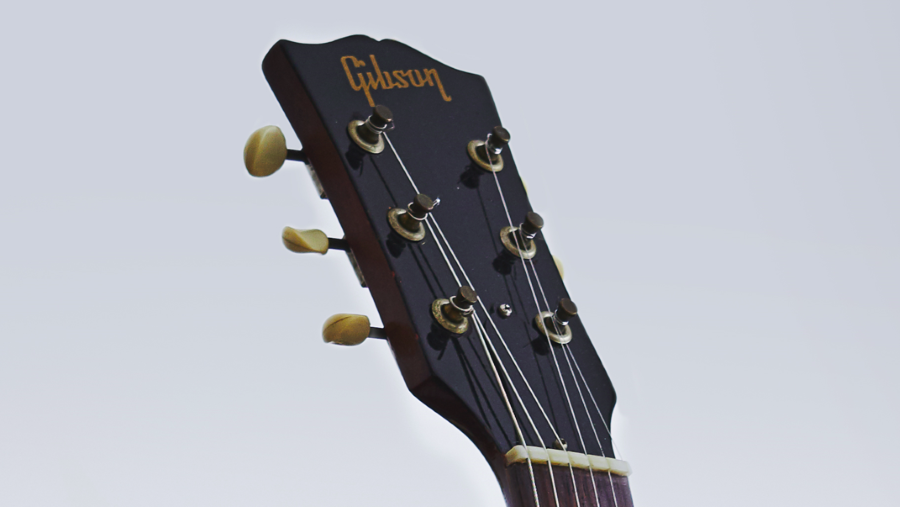What’s the Most Underrated Guitar on the Vintage Market? It Could be the Gibson ES-125TDC
Here’s how Gibson’s first budget electric archtop evolved (one letter at a time).

The dual P-90 pickup single-cutaway ES-125TDC thinline electric archtop was manufactured at Gibson’s Kalamazoo factory during the 1960s. In terms of features, it is the furthest evolved of the original ES-125 lineage – a family of electric archtops that has its roots in the pre-war era of the late 1930s when amplified guitars were just starting to become popular in the jazz world.
The arrival of Gibson’s ‘Electric Spanish’ (ES) range of archtops was heralded by the carved top ES-150 in 1936, and in 1938 the ‘less expensive’ alternative, the ES-100, became available. Sales proved successful and within a few years the ES-100 was renamed the ES-125, although by 1942 production had largely ceased following America’s entry into World War II.

After the war, the demand for electric archtops was stronger than ever and Gibson soon recommenced production. By 1947, the company’s new series of laminated body ES instruments included the revamped ES-125, ES-150 and ES-300, along with its Venetian cutaway sibling, the ES-350 Premier.
These deep-bodied f-hole electric archtops all feature Gibson’s post-war P-90 pickup and set the template for further laminated body designs. Partly due to its lower price point, the ES-125 was the most popular of the line and substantially outsold the other models, reaching its peak in 1953 with over 3,700 instruments shipped.

This post-war period was a time of great innovation in electric-guitar design and musical styles were changing rapidly. With the advent of the solidbody electric guitar in the early 50s – notably Gibson’s Les Paul range and Fender’s Esquire, Telecaster and Stratocaster – the archtop’s popularity began to wane, prompting Gibson to investigate new designs.
Following suggestions from the marketplace, something of a compromise between the bulky feedback-prone archtops and the solidbody guitars appeared in 1955 with the introduction of three thinline electric archtops: the top-of-the-line carved top Byrdland (a combination of “popular recording and TV stars” Hank Garland and Billy Byrd’s names) and the laminated body ES-350T and ES-225T guitars.

With its new thinlines proving an immediate success, Gibson wasted no time expanding the range and in 1956 released the ES-225TD, a dual P-90 single Florentine cutaway thinline similar in spec to the later ES-125TDC, and the ES-125T, a thinline version of the existing deep-bodied ES-125 electric archtop.
All the latest guitar news, interviews, lessons, reviews, deals and more, direct to your inbox!
In 1957, both the single pickup ES-125T and ES-125 designs were augmented with an additional P-90 in the form of the ES-125TD and ES-125D respectively, while the Florentine cutaway ES-225T and ES-225TD models ran concurrently before being discontinued at the end of the ‘50s. The ES-225T and ES-225TD were effectively replaced by the ES-125TC and ES-125TCD in 1960, and the following year the ES-125TCD was renamed the ES-125TDC.

A promotional feature in the July/August 1960 edition of the Gibson Gazette reads, “Gibson announces a new Florentine cutaway style guitar! It’s a new member of the ES-125 series… Comes equipped with either a single pickup (ES-125TC) or a double pickup (ES-125TCD). Gibson predicts a bright future for this finely crafted newest member of its line!”
Sales of both models were relatively strong throughout the decade, but dwindled considerably during the late ‘60s as popular musical styles further evolved. Ultimately, with Gibson under new ownership, the ES-125 range was eventually discontinued at the beginning of the ‘70s.
Thanks to ATB Guitars in Cheltenham, U.K. for showing us this gorgeous example.
Rod Brakes is a music journalist with an expertise in guitars. Having spent many years at the coalface as a guitar dealer and tech, Rod's more recent work as a writer covering artists, industry pros and gear includes contributions for leading publications and websites such as Guitarist, Total Guitar, Guitar World, Guitar Player and MusicRadar in addition to specialist music books, blogs and social media. He is also a lifelong musician.

